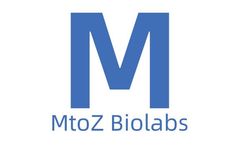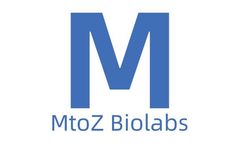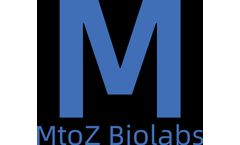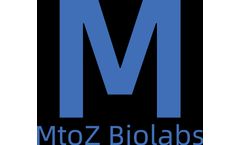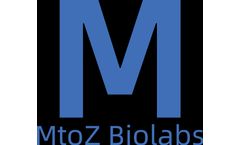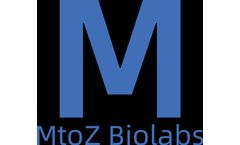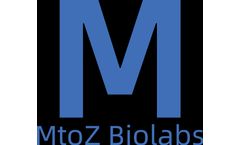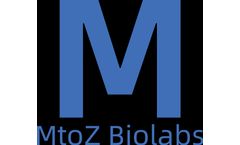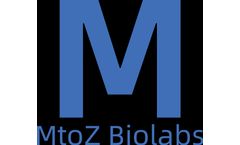Targeted Boron Drugs Articles & Analysis: Older
169 articles found
What Is PROTAC Technology? Proteolytic targeting chimera (PROTAC) is a new type of drug design technology that works by inducing the degradation of target proteins. Unlike conventional small molecules that typically inhibit protein function, PROTACs facilitate the ubiquitination and subsequent degradation of specific proteins. This bifunctional molecule consists of two distinct elements: a ...
Breast cancer remains one of the most prevalent malignancies affecting women worldwide, necessitating innovative approaches for effective treatment and research. Among the most promising strategies in this endeavor are the use of tumor models for breast cancer and the development of customized antibody-drug conjugates (ADCs). These advancements not only enhance our understanding of the disease ...
Introduction Microarray printing technology has revolutionized the field of genomics and proteomics, and its application in glycobiology is no exception. Glycobiology, the study of carbohydrates and their biological functions, relies heavily on the ability to analyze large-scale carbohydrate interactions. Microarray printing in glycobiology enables the precise and high-throughput analysis of ...
Reporter stable cell lines are invaluable tools in molecular biology and biochemistry. By integrating a reporter gene into the genome of a cell, researchers can create a stable cell line that emits a measurable signal in response to specific stimuli or conditions. This technology has revolutionized various fields, including drug discovery, gene expression studies, and cellular signaling research. ...
Alfa Cytology has introduced its advanced drug development services for brain tumors. Alfa Cytology, celebrated for its cutting-edge biotech solutions and extensive tumor research expertise, has recently introduced brain tumor drug development services, designed to empower researchers in understanding the intricacies and unique challenges associated with brain tumors. Brain tumors represent a ...
Liposomes, spherical vesicles composed of one or more phospholipid bilayers, have garnered significant attention in the field of drug delivery due to their unique properties. These nanocarriers offer a promising approach to overcome challenges associated with traditional drug administration, enhancing therapeutic efficacy while minimizing side effects. This article will delve into the role of ...
Sialic acid proteins are a special type of glycoproteins, characterized by the presence of sialic acid at the end of the sugar chain. Sialic acid is a biologically important sugar molecule that plays a crucial role in many intercellular interactions, including cell recognition, adhesion and signal transduction. Therefore, the detection of sialic acid proteins holds significant value in disease ...
Peptidomimetics are structural analogs of peptides or proteins that mimic their biological activities. They are designed to overcome limitations associated with peptides, such as poor stability and bioavailability by preserving or enhancing their functions. Peptidomimetic development involves the design and synthesis of molecules that mimic three-dimensional structures and functional groups of ...
Protein phosphorylation is an important post-translational modification process that involves adding a phosphate group to an amino acid residue in a protein, usually a serine, threonine, or tyrosine residue. Protein phosphorylation plays a key role in regulating various biological processes within the cell, including signal transduction, cell cycle, and metabolism. Therefore, detecting protein ...
In recent years, the field of biotechnology has seen groundbreaking advancements, with the integration of artificial intelligence (AI) into gene editing and therapy. AI-driven technologies have transformed the way we approach genetic modification and treatment, offering unprecedented opportunities for precision medicine and therapeutic interventions. One of the most significant applications of ...
Ovalbumin, also known as albumin or OVA, is the most abundant protein found in egg white, accounting for approximately 54% of its total protein content. This versatile glycoprotein has captivated researchers and industry professionals alike due to its unique properties and wide-ranging applications. In this article, we'll explore the structure, functions, and diverse uses of ovalbumin in various ...
Boxcab Antibody Sequencing is an important experimental method commonly used in studying cellular and protein responses. In biomedical research, antibodies are a powerful tool used in the detection and quantification of target antigens. However, a comprehensive understanding of the antibody requires knowledge of its amino acid sequence, which can be achieved through antibody sequencing.Antibody ...
When we talk about antibody sequencing, we often think of issues related to disease treatment and improving human health. Nanobody sequencing provides us with a more precise and efficient solution. Nanobodies, also known as single-domain antibodies, are antibodies composed of a single functional domain. They have the advantages of small size, high stability, and good penetration, and therefore ...
In-depth research on protein interaction plays a crucial role in life science research. Proteins are the main bearers of life activities, and their interactions form a complex molecular network within biological cells. Protein-Protein Interaction Sequencing (PPI-Seq) is an emerging technology. Based on high-throughput sequencing, it allows researchers to explore protein interactions at the whole ...
Mitochondria are a unique type of organelle present within cells, serving as the primary source of energy within living organisms. They are responsible for several life-sustaining processes, including energy production, reducing free radicals, and maintaining cellular signaling. Proteins within the mitochondria play a key role in these processes.Why Sequence Mitochondrial Proteins?The sequencing ...
What is Gene Knockout Technology?Gene knockout (Gene Knockout) is a molecular biology technique that allows researchers to block or shut off the function of a specific gene to study its role and importance. This technique is achieved by introducing mutations into the gene, making it impossible for the gene to express properly or produce functional proteins.Applications of Gene Knockout ...
Polyethylene glycol (PEG) derivatives have become pivotal in the pharmaceutical industry, revolutionizing drug delivery systems and enhancing the efficacy of various therapeutic agents. The unique properties of PEG derivatives, including their biocompatibility and ability to modify the solubility, stability, and bioavailability of drugs, make them indispensable in modern pharmacology. This ...
The Latest Technological Advances in Antibody Discovery1. Single B Cell Isolation and SequencingThe isolation and sequencing of single B cells can help us gain a deeper understanding of the diversity and specificity of B cells. Through this method, we can clarify the relationship between the sequence and the cell, thus discovering antibodies with special properties. These antibodies may have high ...
Biopharmaceuticals and personalized medicine are hot fields in the development of the pharmaceutical industry today. Proteins, peptides, and antibodies are important molecules in the body and are important objects of research in biopharmaceuticals and personalized medicine. With the continuous advancement of protein, peptide, and antibody sequencing technology, they are playing an increasingly ...
We recently spoke with Manuela Badiali, Rita Congiu, and Stefania Murru from the Laboratory of Genetics and Genomics, Microcitemico Pediatric Hospital – A. Cao, Cagliari, about how SOPHiA DDM™ RNAtarget Technology has helped them optimize their variant analysis workflow. ...






